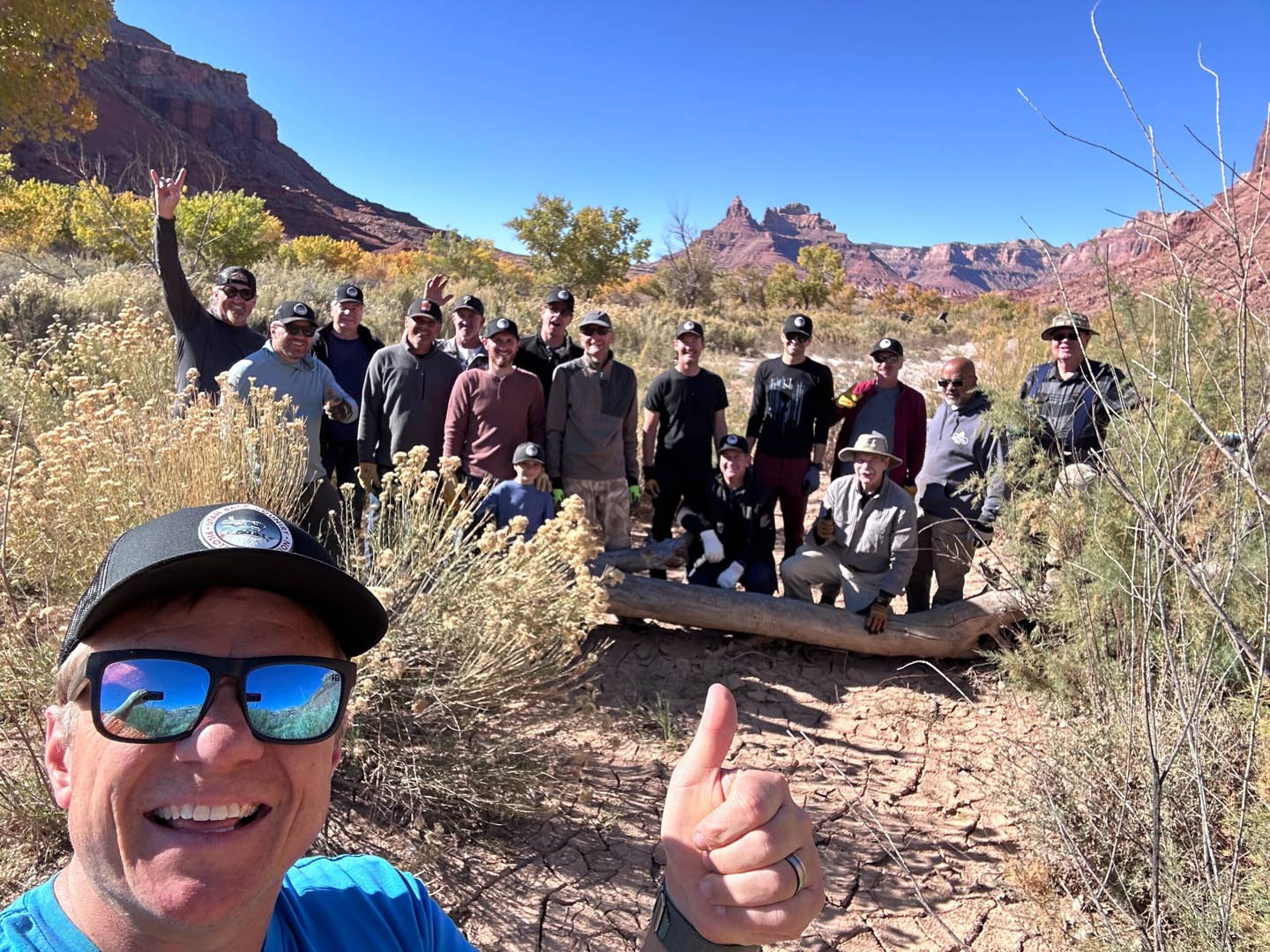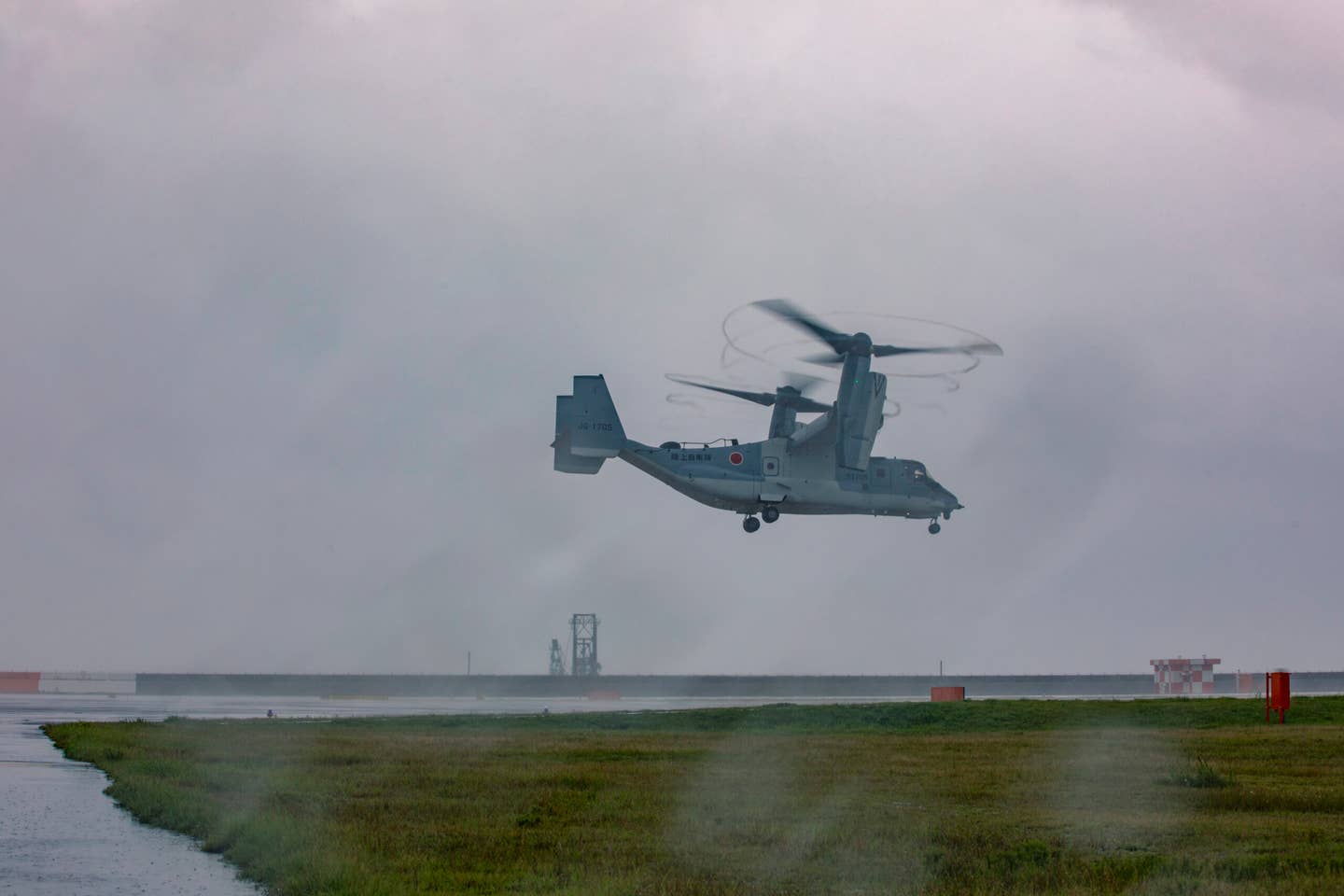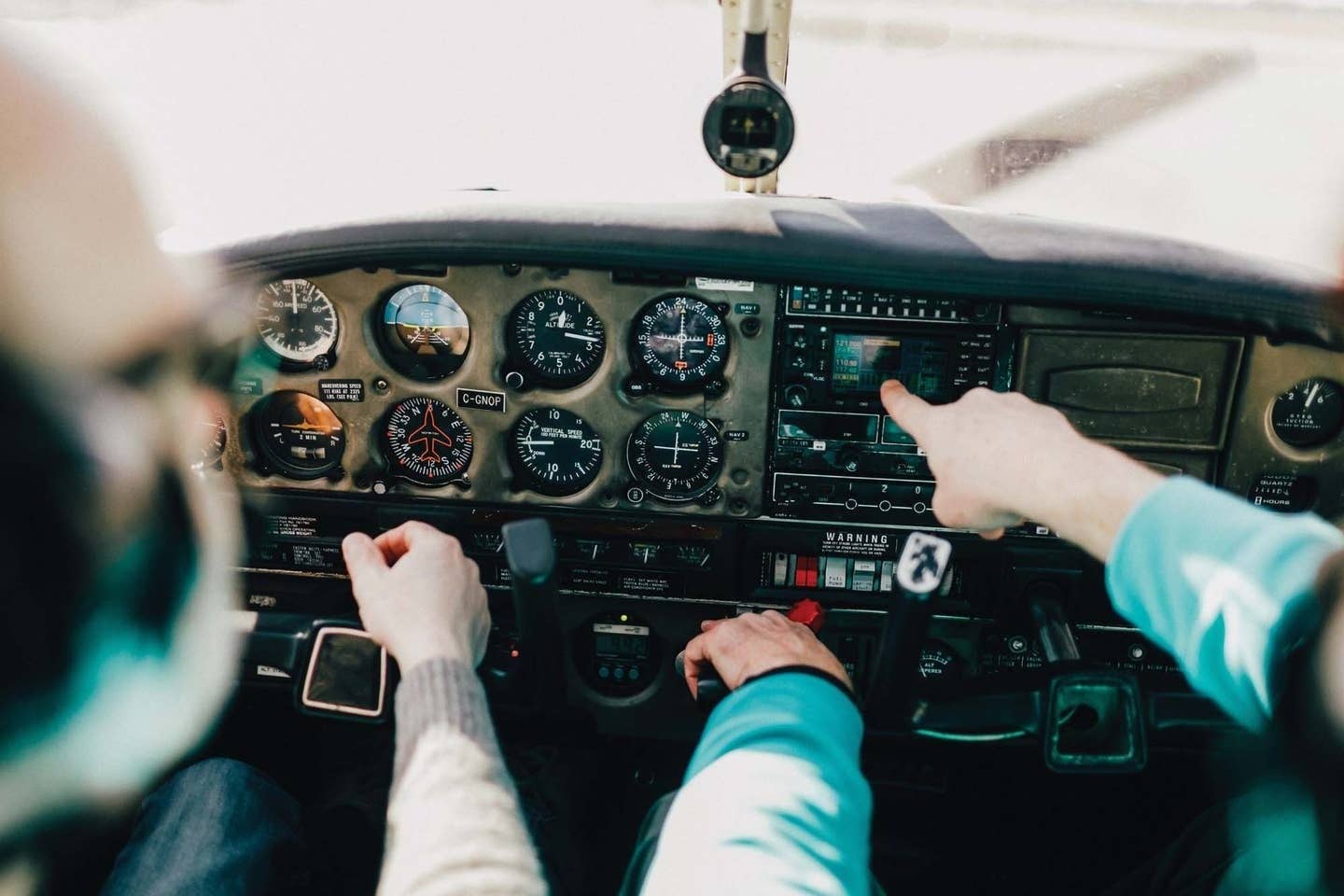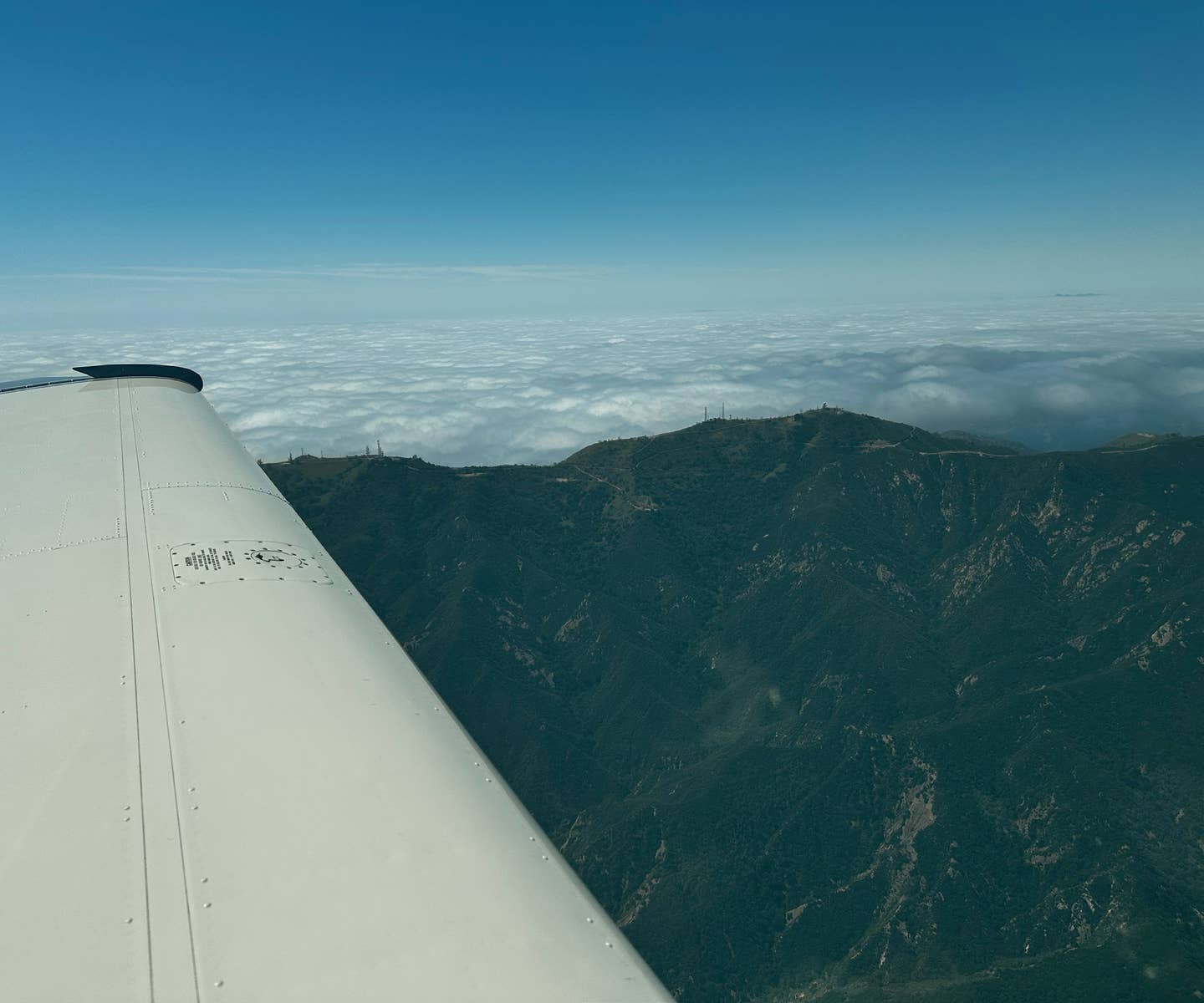
When a Beech Sierra flown by a 4,000-hour commercial pilot, accompanied by his wife and daughter, arrived at the Fulton County Airport at Wauseon, Ohio, the wind was from the west-southwest at 26 to 35 knots, with gusts as high as 43 knots. The VFR flight from Troy, Michigan, a distance of only 76 nm, had taken nearly an hour because of the powerful headwind aloft.
The pilot had briefed himself online. He may or may not have seen the special message from the National Weather Service warning of extremely strong winds and possible "minor property damage" -- a warning intended, to be sure, principally for the owners of awnings and tall vehicles, not airplanes. But he was not unaware of the wind, which was blowing hard at Troy as well. While his airplane was being fueled he had inquired whether other airplanes were flying, and learned that only one had taken off: an MU-2, whose wing loading and speed put it in an entirely different class than the Sierra.
The single east-west runway at Wauseon is 75 feet wide, 3,882 feet long, and was flanked by 80-foot trees 200 feet from the runway on the north side and 550 feet from it on the south. The west-southwest wind was 20 to 30 degrees off the runway heading, and so the crosswind component would be between 35 and 50 percent of the wind speed or, if the wind were blowing at 40 knots when he landed, about 14 to 20 knots. The trees, which were on private property and which the airport commission had been trying for years to have cut, affected the flow of air over the runway when the wind blew strongly across them. The airport manager described them as producing a "terrible, terrible funnel effect ... with lots of rolling wind."
The Sierra never made it to the runway. There were no witnesses to the accident, in which all three occupants of the airplane died, but the wreckage was found 350 feet north of the approach end of Runway 27. The right wing had struck first, 250 feet north of the threshold, and the airplane had slid 100 feet northward before coming to rest pointed west-southwest. The airplane was upright; the cabin area was crushed; the nose gear had separated; the gear switch was in the up position, with the right main retracted and the left main extended, as if the gear had been in the process of retracting when the accident occurred. The flaps were fully extended. There was no post-crash fire, but ample fuel was present in both tanks and nothing was found to suggest that mechanical trouble had played a part in the accident. In fact, although a pilot on the ground had observed the Sierra passing overhead at 1,000 feet and wondered why anybody would be flying on such a day, radar showed the Sierra making a somewhat low but otherwise unremarkable approach to the runway. Its average descent rate was 400 fpm, its groundspeed 68 knots -- approximately a three-degree glideslope, like that of an ILS. The last radar return put it 120 feet above the surface and about 1,000 feet from the runway threshold -- a normal position for final approach.
The NTSB's finding of probable cause confined itself to the evident facts:
The pilot's failure to maintain control during the approach to landing. Factors were the high wind gusts and turbulence, and the pilot's decision to fly in those conditions.
Even though the centennial of powered flight is already well behind us, no single crosswind landing technique is used by all pilots and approved by all instructors. But a couple of general principles are agreed upon. One is to keep speed up and "fly the plane on," because the effects of the crosswind get larger as the airplane gets slower. Controllability is also better at higher speed. Another common practice is to use only partial flaps, or no flaps at all. There are several reasons for this. If a go-around is required, full flap would impede it. Full flap conflicts with the higher-than-normal speeds used during the approach and right through to the touchdown. Full flap lowers the nose of the airplane and, if height control is difficult during the flare, makes a nosewheel strike more likely.
A steady, smooth crosswind presents some challenges for pilots, but the task is made more difficult when the wind is gusty or turbulent, as it often is when buildings or other obstacles beside the runway, like the tall trees at Wauseon, disturb the flow near the surface. You can't see air, but if the runway environment were a river rather than the atmosphere you would see white water.
It is instructive, in fact, to study the behavior of the small plastic kayaks called playboats -- lots of tape and photographs can be found online, since playboating is one of the "look at me" sports -- the point of which is to remain in place, while performing goofy gyrations, rolls, flips and so on, on a fast-moving river. The sport takes advantage of the fact that, even in rapidly moving water, eddies and reverse currents form near obstructions. The first requirement of playboating is to be able to hold position in one of these; a small excursion from the pocket of stillness and the boat is swept rapidly downstream.
The reason playboating in particular, and rivers in general, should be of interest to pilots is that they aid in visualizing the behavior of air. When you have observed how a still pool and a swift current can exist side by side, just a couple of feet apart, you get a better understanding of how turbulent winds can produce sudden changes of airspeed, how currents can suddenly change direction, how a calm can exist in the middle of a rapid flow and vice versa, and how thoroughly unpredictable agitated air can be.
If a gusty wind is blowing straight down the runway, all you have to worry about is maintaining airspeed. You add some knots "for grandma," or whoever in your family stands for an excess of caution, or cushion. My personal guideline is to add the gust differential -- "20 gusting to 30" is a 10-knot differential -- to 90 percent of the approach speed. (If the airspeed indicator is jumping all over the place, of course, one automatically tends to add more.) In this case, the lowest wind speed being reported was 26 knots and the highest 43. If the normal approach speed is 74 knots (the dirty stall speed is 57 knots, and approach speed is normally 1.3 times that speed), a 17-knot gust differential would call for an approach speed of 84 knots.
A gusting crosswind adds a new level of difficulty, because gusts affect not only the speed of the airplane but also its alignment with and height above the runway. Sufficiently frequent and powerful side-gusts make a graceful landing unlikely; the aim is to get "planted" and exchange the task of flying the airplane for that of taxiing it -- which may be quite a challenge in itself.
We can assume that the pilot of the Sierra knew all this. Any 4,000-hour ATP living in the Midwest would. He may have mentally calculated the crosswind component for a wind of, say, 35 knots 30 degrees off the nose -- the crosswind component of a wind 30 degrees off the nose is half of the wind speed -- and concluded that at 17 knots it was acceptable. (The Sierra is a Part 23 airplane, and not subject to a specific crosswind-landing requirement. Part 25 requires a minimum 20-knot crosswind capability.)
The 68-knot groundspeed recorded by radar suggests that the wind was not blowing its strongest during the final approach. Say the pilot maintained 85 knots. That still implies only a 17-knot headwind component, which corresponds to a wind speed of about 20 knots and a 10-knot crosswind component. Of course, he may have flown the approach at 90 or 95 kias -- we don't know -- but the fact that he was using full flaps suggests a lower speed.
It does not sound like a very difficult situation, and certainly not one that would result in the airplane crashing. Even if the wind suddenly died completely, the airplane would still have ample airspeed and the pilot could maintain altitude by raising the nose without fear of stalling. But the cause of the accident appears not to have been the mere variability of the wind; it was more likely the turbulence in it.
It appears that the accident may have been due to the "terrible funnel effect" and the "rolling wind" created by the area of 80-foot trees 550 feet south of the runway. The influence of the trees would first have been felt 1,000 feet short of the runway threshold, but the airplane would not have encountered the "rolling" effect until it descended below, say, 100 feet above the surface -- that is, just after the last radar return. During the six seconds that it took to traverse the remaining 1,000 feet to the runway, the Sierra could have encountered rapidly increasing turbulence. It is possible that the pilot decided to abort the approach, and that the gear handle was up because he was beginning to go around. He may have started to bank to the right, in order to allow the airplane to be carried away from the troublesome line of trees. With full flaps and gear in transit, the 200 hp Sierra would not have climbed very strongly, and it appears likely that at that moment a particularly strong jet or vortex of wind struck the airplane, simultaneously rolling it to the right and pushing it downward. The right wing struck the surface, and the force of its impact must have changed the airplane's direction of flight sufficiently to account for the ground scar being at a right angle to the approach path.
The accident occurred on a Sunday, and one can only guess what pressure the pilot may or may not have felt to get himself or his wife back to work, or their daughter to school, the following day. But the NTSB is perhaps not entirely fair in faulting his judgment. The pilot's experience level -- in addition to his commercial/instrument ticket he was a helicopter ATP -- gave him good reason to feel that he could make correct inflight decisions and possessed the necessary skills to deal with whatever the day's strong winds would bring. (His time in the Sierra, it is true, was only seven hours.) In citing the pilot's judgment, the NTSB has the advantage of hindsight; it was by no means certain that some freak wind would grab the Sierra and slam it into the ground. Indeed, although very strong winds covered a wide area, there were no other accidents or incidents in the Great Lakes region -- indeed, within a thousand miles of it -- that day -- and it is pretty certain that at least a few other airplanes were flying. Other pilots also exposed themselves to an elevated risk that day, and the rest all came through unscathed. Was their judgment any better?
This article is based on the National Transportation Safety Board's report of the accident and is intended to bring the issues raised to the attention of our readers. It is not intended to judge or to reach any definitive conclusions about the ability or capacity of any person, living or dead, or any aircraft or accessory.

Sign-up for newsletters & special offers!
Get the latest FLYING stories & special offers delivered directly to your inbox






